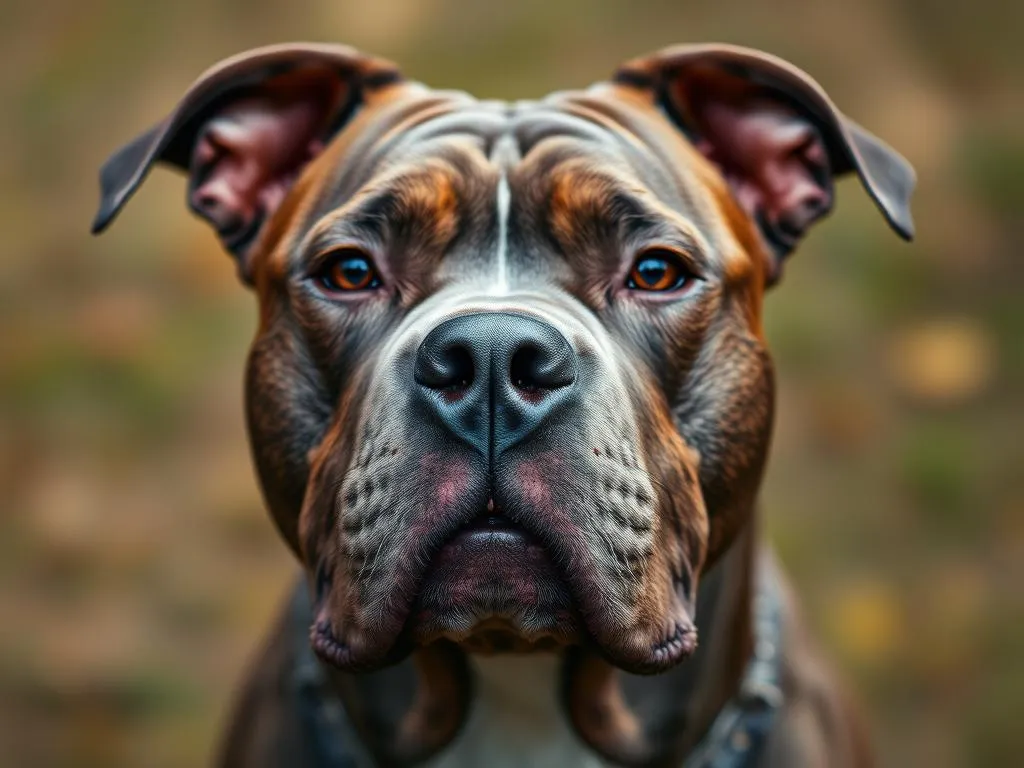
Introduction
The world of dog breeds is vast and diverse, with each breed showcasing unique traits and characteristics that cater to different lifestyles and preferences. Among these breeds, the blue nose pitbull stands out due to its striking appearance and affectionate nature. This particular variation of the American Pitbull Terrier has garnered a passionate following among dog enthusiasts, known for its stunning blue-gray coat and charming personality.
The blue nose pitbull is not just a pretty face; it carries a rich history and a distinctive temperament that make it an intriguing breed. In this article, we delve into the essence of the blue nose pitbull, exploring its origins, physical characteristics, care requirements, and much more, providing a comprehensive guide for anyone considering bringing one of these dogs into their home.
Understanding Dog Breeds
What is a Dog Breed?
A dog breed is a specific group of domestic dogs with particular traits and characteristics that have been selectively bred over generations. These traits can include size, coat type, behavior, and temperament. Understanding dog breeds is essential for potential owners as it helps them choose a breed that aligns with their lifestyle and expectations.
The Role of Breeding in Dog Health and Behavior
Selective breeding plays a vital role in the health and behavior of dogs. Responsible breeders focus on producing healthy puppies that conform to breed standards while minimizing genetic disorders. This practice ensures that dogs are not only physically sound but also possess desirable temperaments, making them suitable companions.
The Blue Nose Pitbull: An Overview
History and Origins
The blue nose pitbull is a variation of the American Pitbull Terrier, which has its roots in the United States. The breed was developed in the 19th century for various purposes, including farming, hunting, and as a family companion. The blue coloration in blue nose pitbulls is a result of a recessive gene, and it doesn’t signify a separate breed but rather a specific color variation within the Pitbull lineage.
Characteristics of Blue Nose Pitbulls
Blue nose pitbulls are known for their muscular build and athletic prowess. Typically, they exhibit a sleek, short coat that showcases their striking blue-gray hue. Their temperament is often described as loyal, affectionate, and intelligent, making them excellent companions for families and individuals alike. However, they require proper training and socialization to thrive.
Physical Characteristics
Size and Weight
Blue nose pitbulls are medium-sized dogs. On average, they stand between 18 to 21 inches tall at the shoulder and weigh between 30 to 65 pounds. Males are generally larger than females, but both sexes are known for their strong and muscular physique.
Coat and Color
The defining feature of the blue nose pitbull is its coat color. Their short, smooth coat is primarily blue-gray, which can occasionally appear to have a silvery sheen. While the blue nose variant is popular, they can also come in other colors, including black, fawn, and brindle, but the blue nose is most sought after for its unique aesthetic.
Distinct Features
Blue nose pitbulls have several distinct physical traits. Their broad head, strong jaws, and pronounced cheekbones contribute to their powerful appearance. They typically have a muscular neck and well-defined shoulders, enhancing their athletic look. The breed often possesses a short, smooth coat that requires minimal grooming, and their ears are usually cropped or left natural.
Temperament and Behavior
General Temperament
The temperament of blue nose pitbulls is often misunderstood. They are known for being affectionate, loyal, and playful. These dogs thrive on human interaction and are eager to please their owners, which makes them highly trainable. Their intelligence allows them to learn commands and tricks quickly, provided they receive consistent training.
Socialization Needs
Early socialization is crucial for blue nose pitbulls. Introducing them to various environments, people, and other animals at a young age helps them develop into well-rounded adults. Socialization reduces the likelihood of behavioral issues and ensures they are comfortable in different situations.
Interaction with Children and Other Pets
Blue nose pitbulls are typically good with children, often forming strong bonds with their families. However, supervision is essential, especially with younger kids, to prevent rough play. When introducing blue nose pitbulls to other pets, gradual introductions and positive reinforcement methods are recommended to foster harmonious relationships.
Health and Care
Common Health Issues
Like all breeds, blue nose pitbulls may be prone to specific health problems. Common issues include hip dysplasia, skin allergies, and certain heart conditions. Regular veterinary check-ups and a healthy lifestyle can help mitigate these risks.
Nutrition
Nutrition plays a vital role in the overall health of blue nose pitbulls. A balanced diet rich in high-quality protein, healthy fats, and essential vitamins and minerals is recommended. Owners should consult their veterinarian to determine the best dietary plan tailored to their dog’s age, weight, and activity level.
Grooming Requirements
Grooming a blue nose pitbull is relatively simple due to their short coat. Regular brushing helps remove loose hair and dirt, while occasional baths keep their coat clean and healthy. Additionally, routine dental care and nail trimming are essential components of their grooming routine.
Exercise Needs
Blue nose pitbulls are energetic dogs that require regular exercise to maintain their physical and mental health. Daily walks, play sessions, and engaging activities such as agility training are excellent ways to keep them active. Aim for at least 60 minutes of exercise each day to ensure they remain happy and well-adjusted.
Training and Obedience
Importance of Training
Training is crucial for blue nose pitbulls, as they are strong, intelligent dogs that need guidance. Proper training helps establish a strong bond between the dog and owner while ensuring the dog understands boundaries and acceptable behavior.
Basic Commands and Obedience Training
Start with basic commands such as “sit,” “stay,” “come,” and “down.” Consistency and positive reinforcement, such as treats and praise, are effective in teaching these commands. Training sessions should be short, fun, and engaging to keep the dog motivated.
Advanced Training and Social Skills
Once basic commands are mastered, consider moving on to advanced training techniques. Obedience classes, agility training, and socialization exercises can enhance your blue nose pitbull’s skills and confidence. Positive reinforcement methods should always be the primary approach to training.
Myths and Misconceptions
Common Misunderstandings about Pitbulls
The blue nose pitbull, like all pitbulls, has faced numerous misconceptions. Many people associate pitbulls with aggression and danger, often overlooking their affectionate and loyal nature. It’s essential to understand that a dog’s behavior is heavily influenced by training, socialization, and individual temperament rather than breed alone.
Clarifying Misconceptions about Blue Nose Variants
Specific myths surrounding blue nose pitbulls suggest that they are inherently more aggressive or possess different behavioral traits compared to other pitbulls. In reality, the blue nose coloration does not affect temperament. Like all dogs, their behavior is shaped by their upbringing, environment, and training.
Adopting a Blue Nose Pitbull
Where to Find Blue Nose Pitbulls
When looking to adopt a blue nose pitbull, consider reputable breeders who prioritize health and temperament. Additionally, many shelters and rescues have pitbulls in need of homes. Adopting from these organizations not only saves a life but also provides a loving home to a dog in need.
What to Consider Before Adoption
Before bringing a blue nose pitbull home, assess your lifestyle and living situation. Consider factors such as your activity level, available space, and the time you can dedicate to training and socialization. Understanding the responsibilities of dog ownership is crucial for a successful adoption.
The Adoption Process
The adoption process usually involves filling out an application, meeting the dog, and possibly undergoing a home check or interview. Ensure that you ask questions about the dog’s history, health, and temperament to make an informed decision.
Conclusion
The blue nose pitbull is more than just a striking appearance; it is a breed full of love, loyalty, and energy. Understanding its history, characteristics, and care requirements is essential for any potential owner. With proper training, socialization, and love, blue nose pitbulls can make wonderful companions and family pets.
As with any breed, responsible ownership is key. Committing to their needs and providing a nurturing environment will ensure that your blue nose pitbull thrives and becomes a cherished member of your family.
FAQs
What is the lifespan of a blue nose pitbull?
The lifespan of a blue nose pitbull typically ranges from 12 to 16 years, depending on genetics and overall health.
Are blue nose pitbulls good family dogs?
Yes, blue nose pitbulls are known for their affectionate nature and ability to bond well with families, especially when properly socialized and trained.
How much exercise does a blue nose pitbull need?
Blue nose pitbulls require at least 60 minutes of exercise daily to maintain their health and well-being.
Are blue nose pitbulls aggressive?
No, blue nose pitbulls are not inherently aggressive. Their behavior depends on training, socialization, and individual temperament.
How do I find a reputable blue nose pitbull breeder?
Research breeders through breed clubs, online reviews, and recommendations from veterinarians. Always visit the breeding facility and meet the puppies’ parents to ensure responsible breeding practices.









